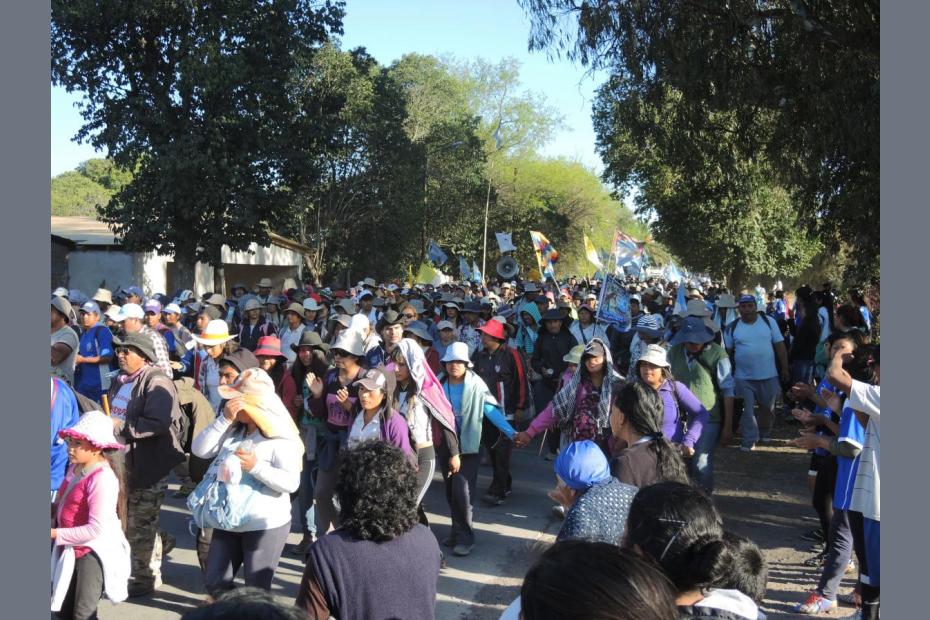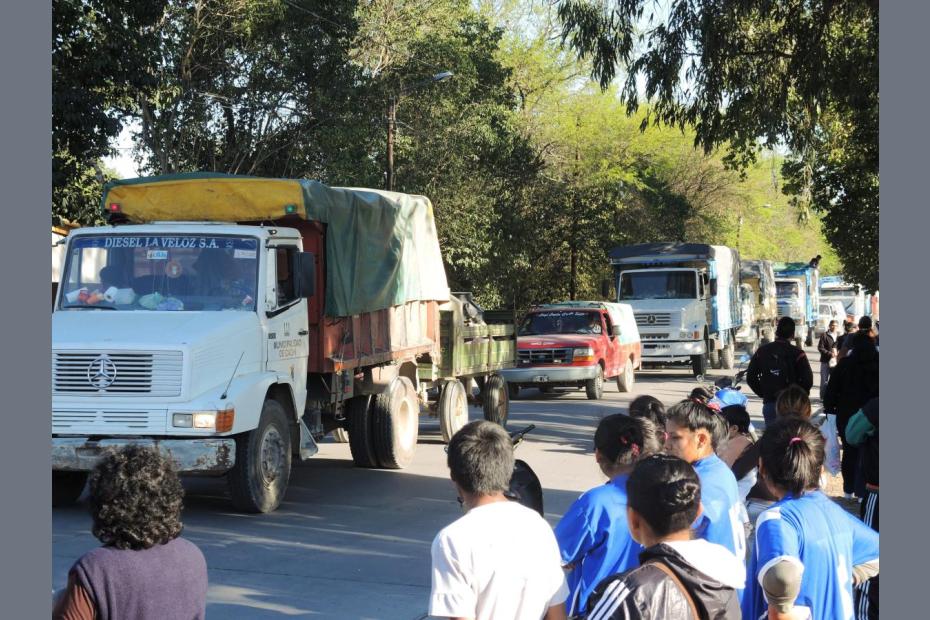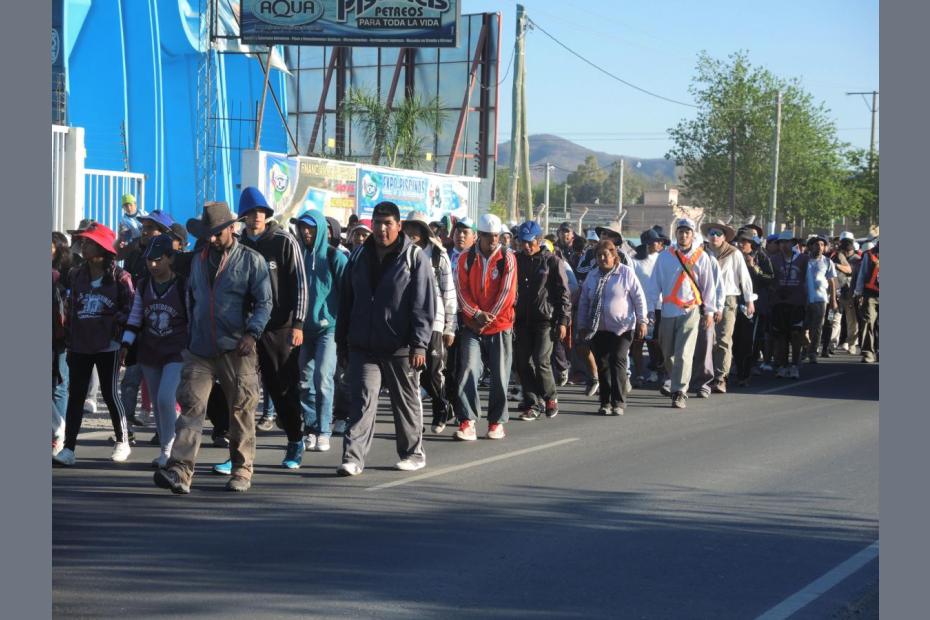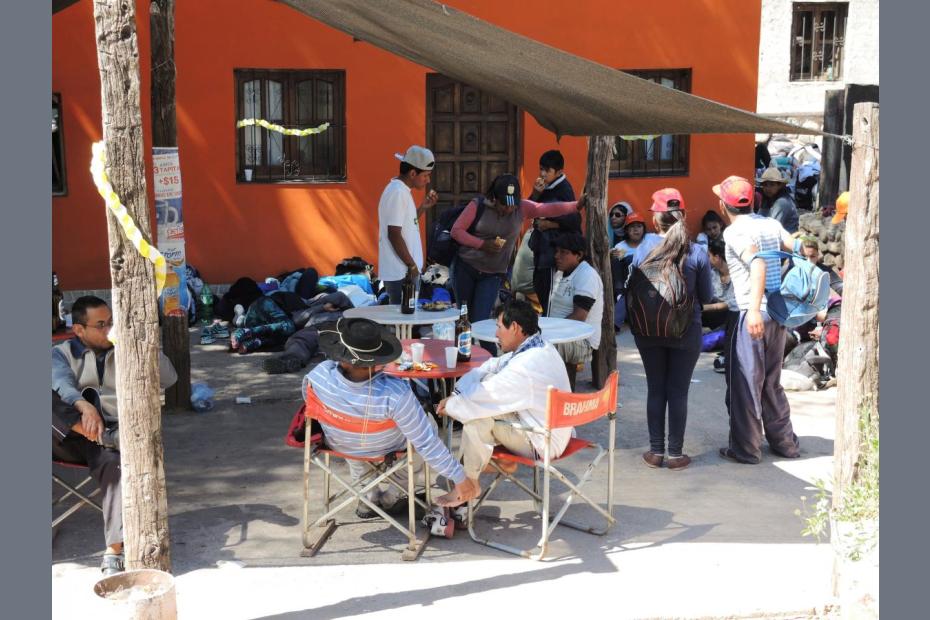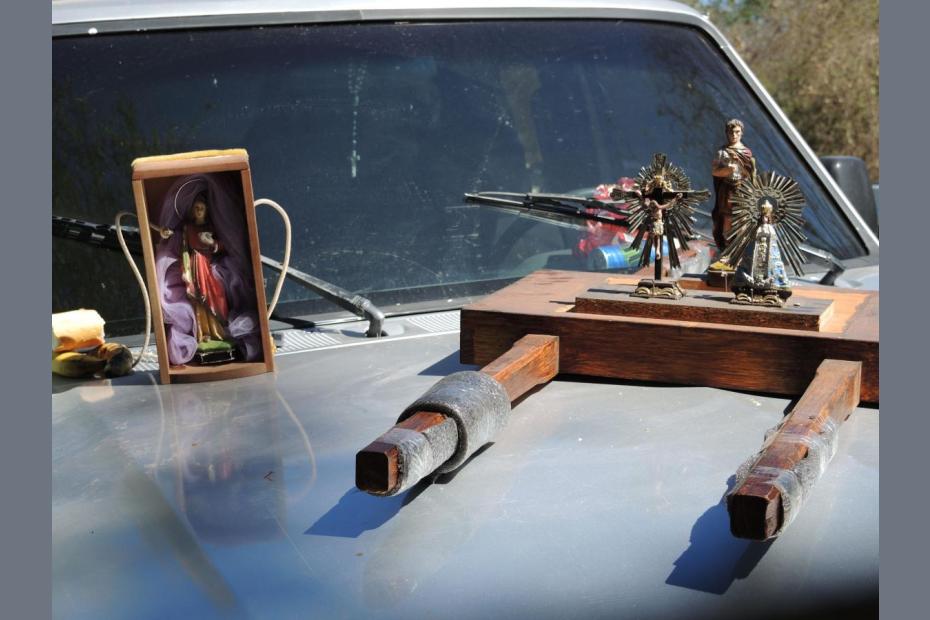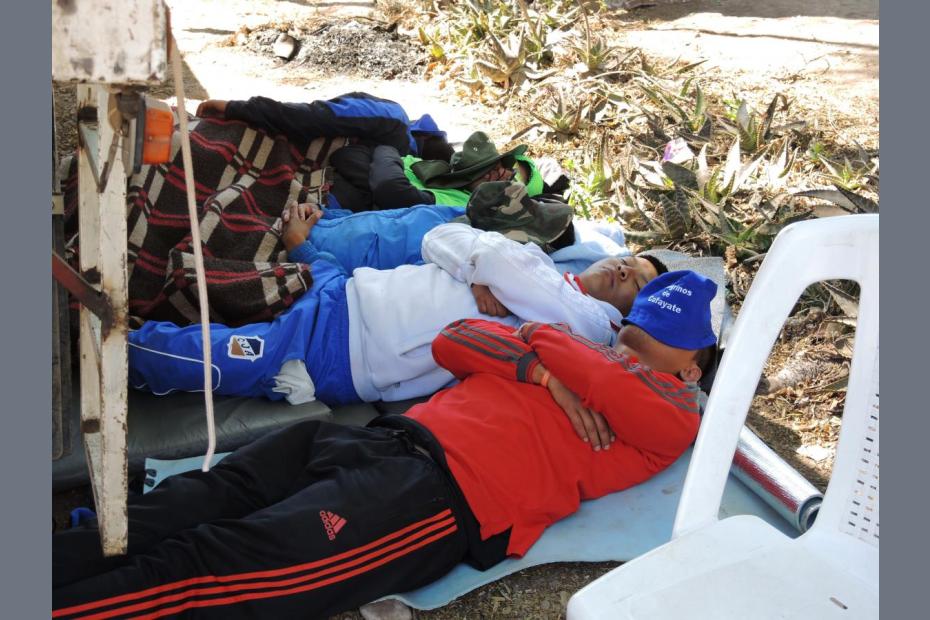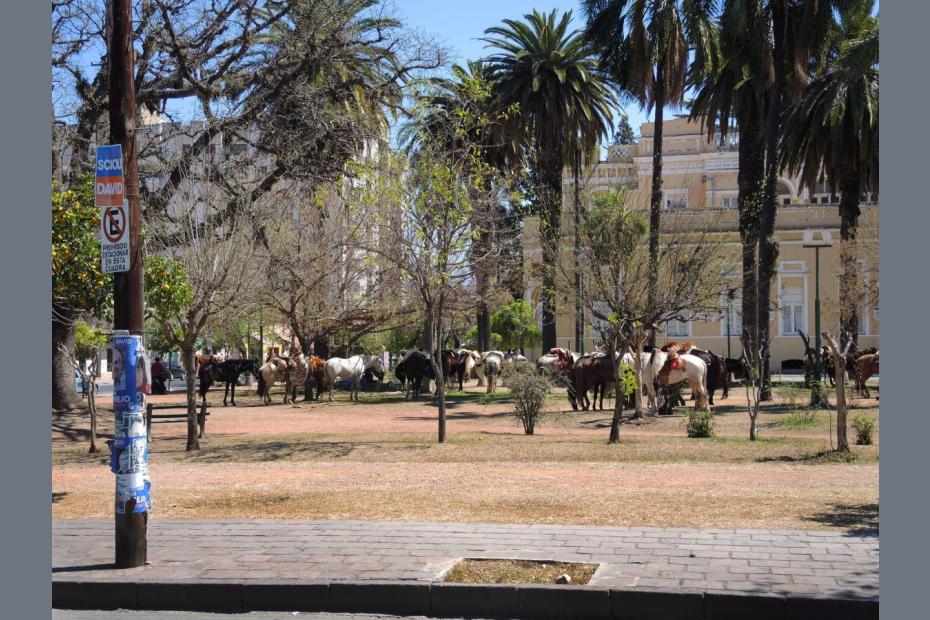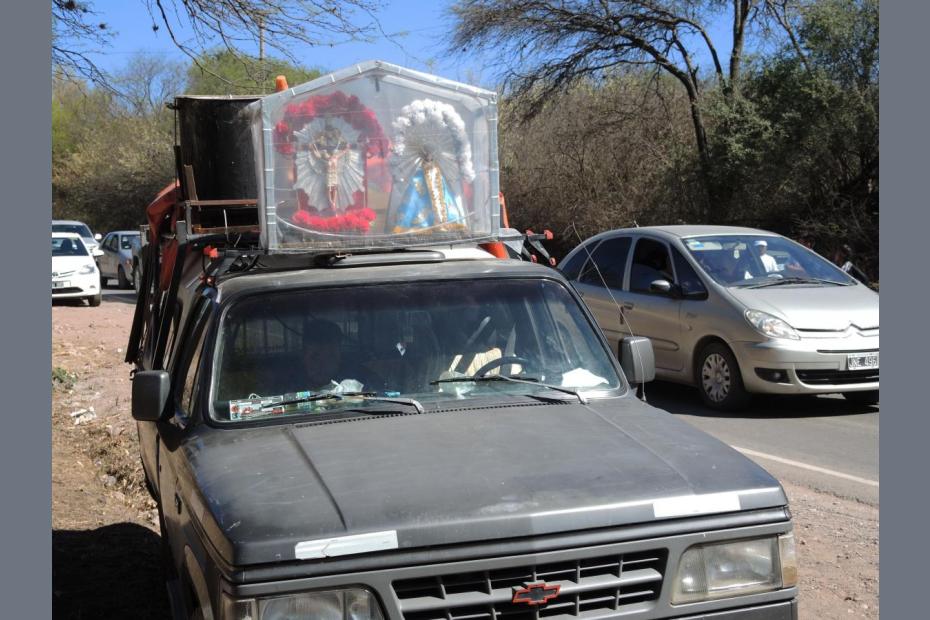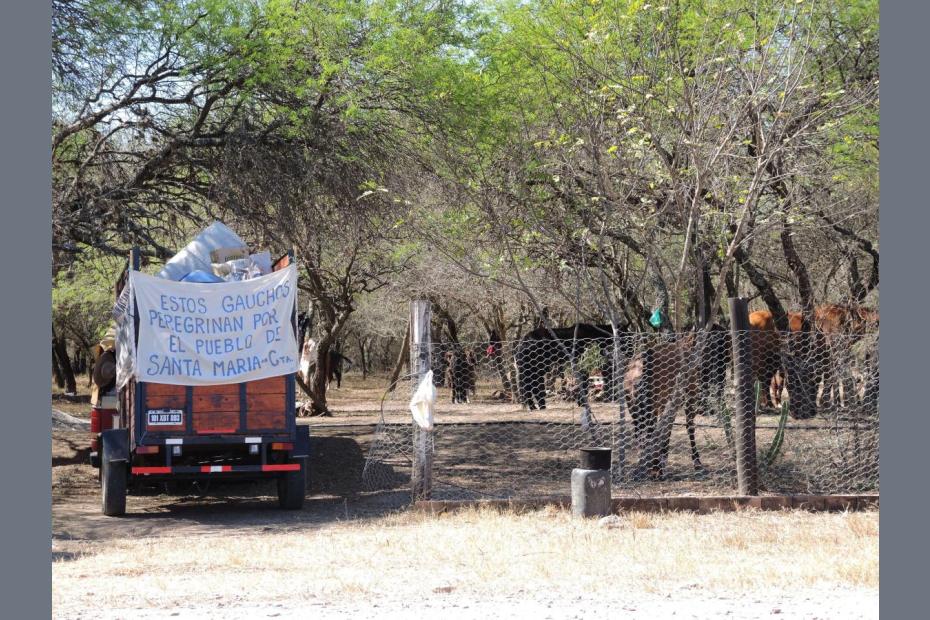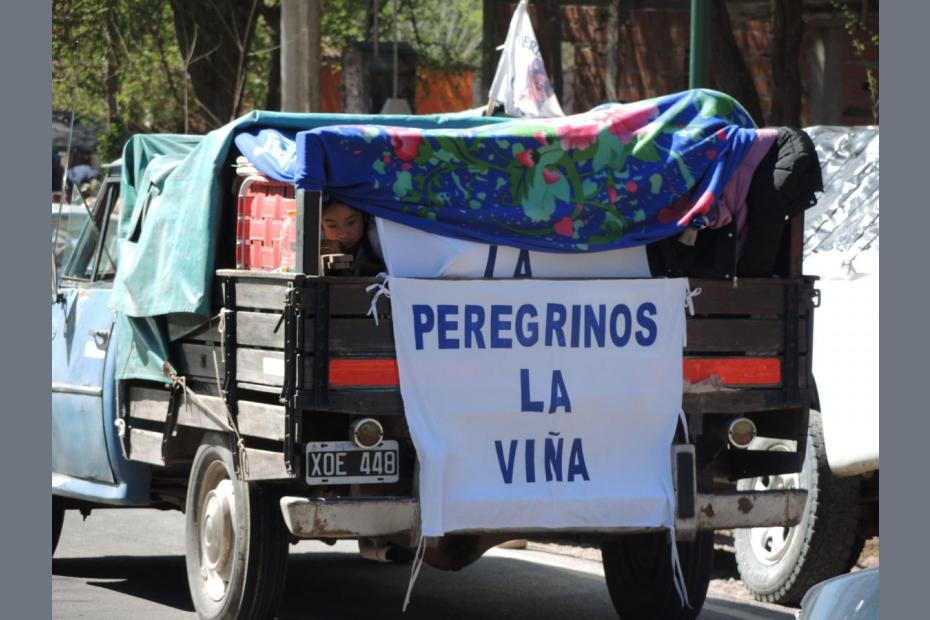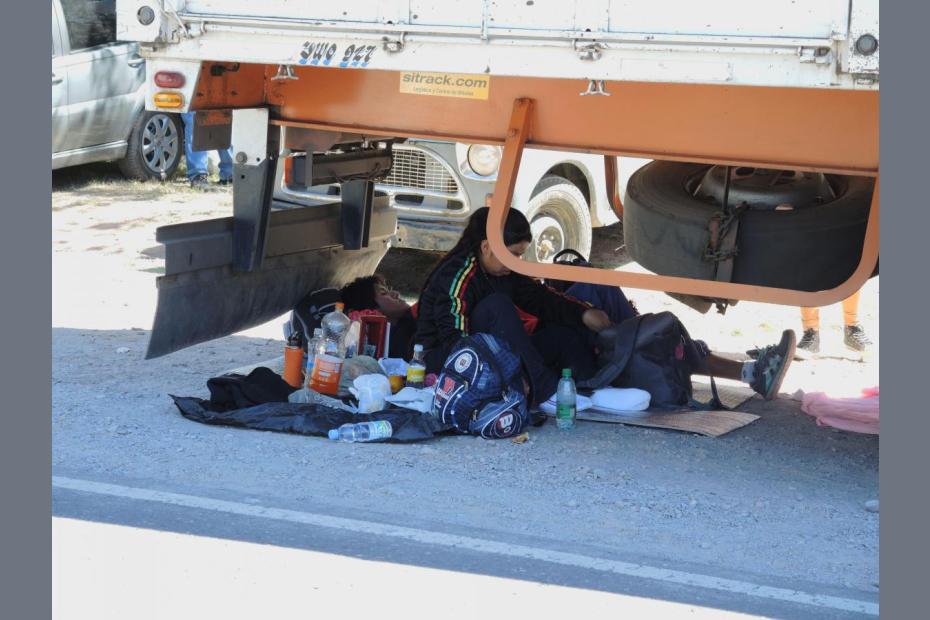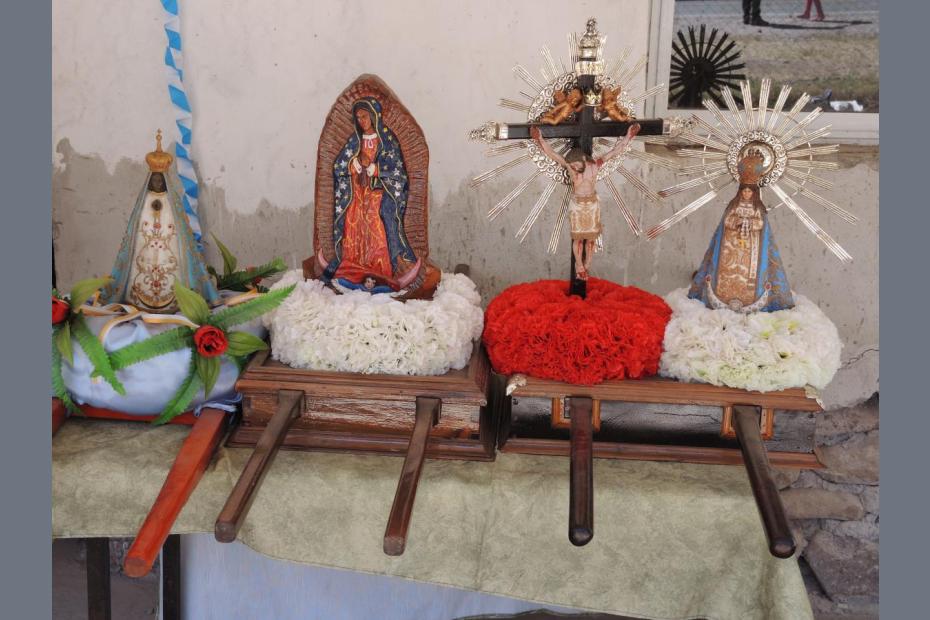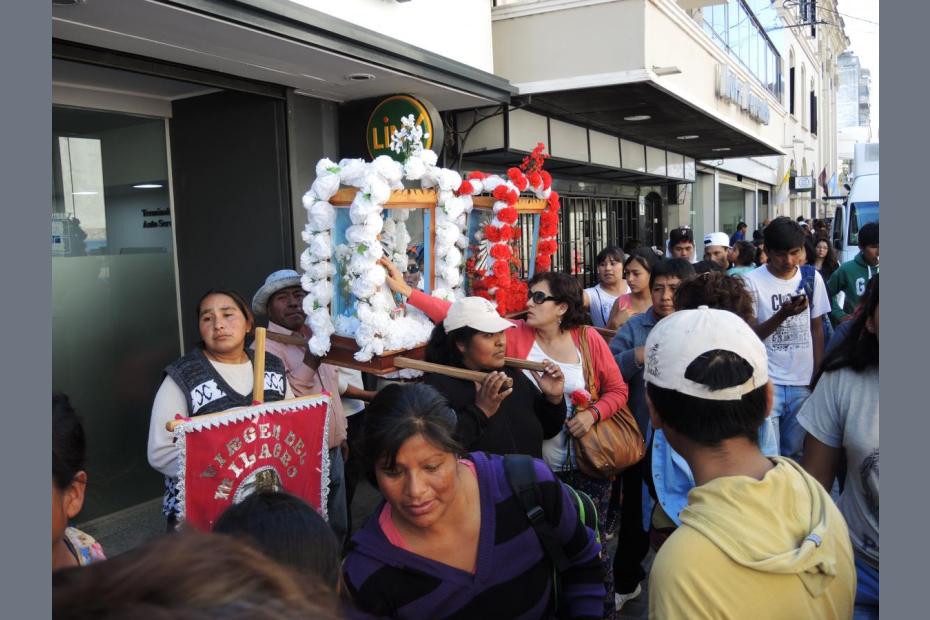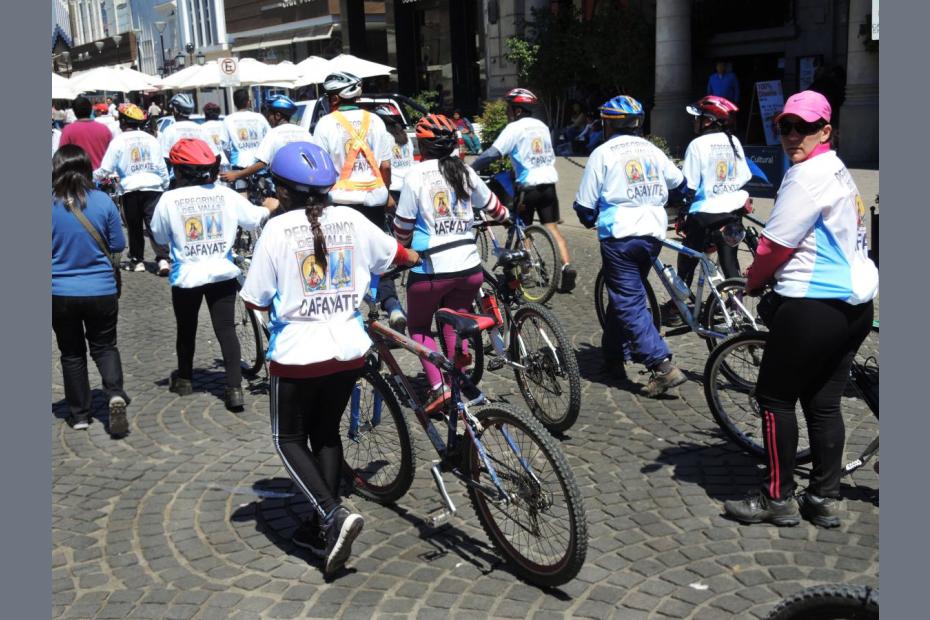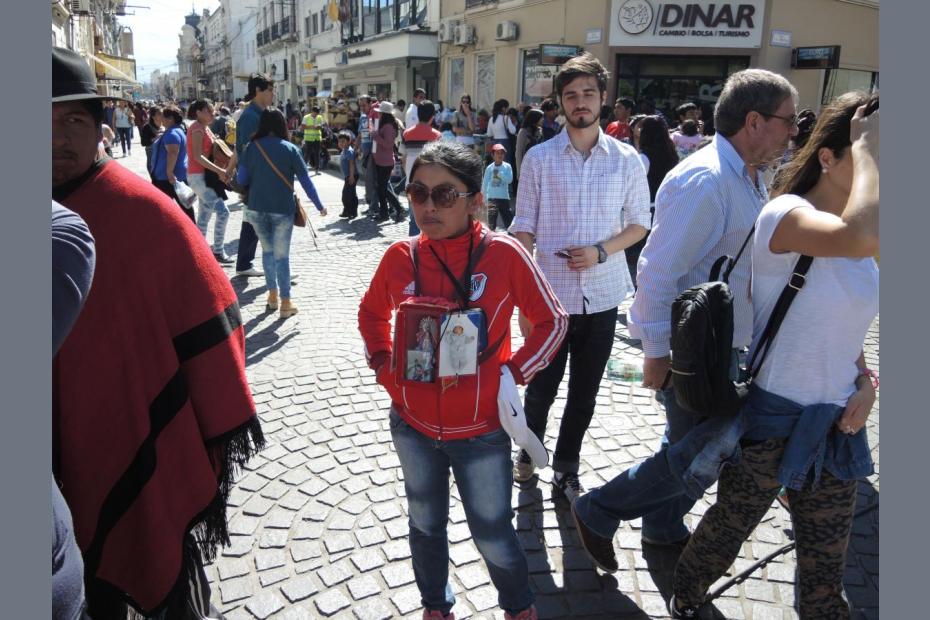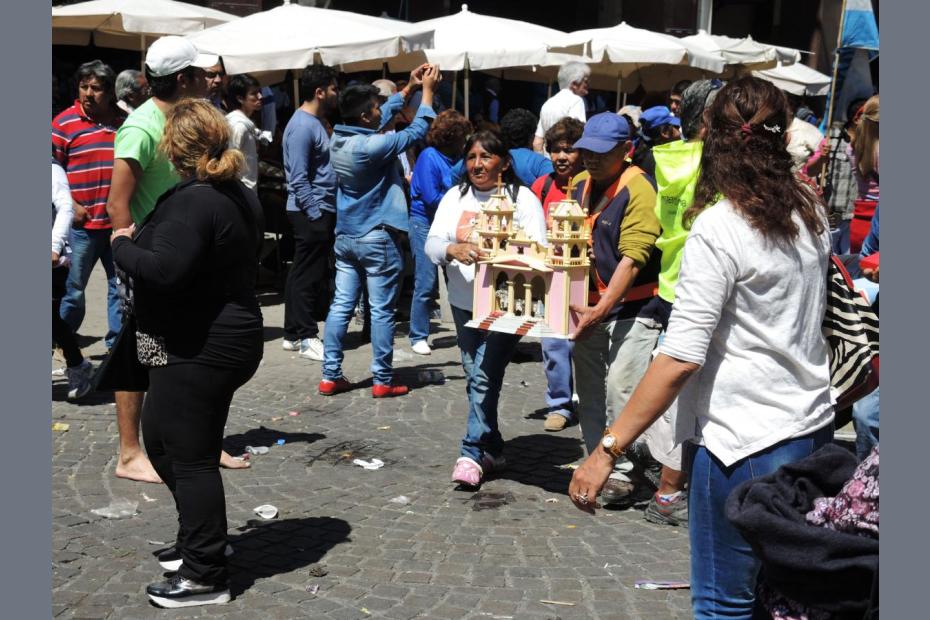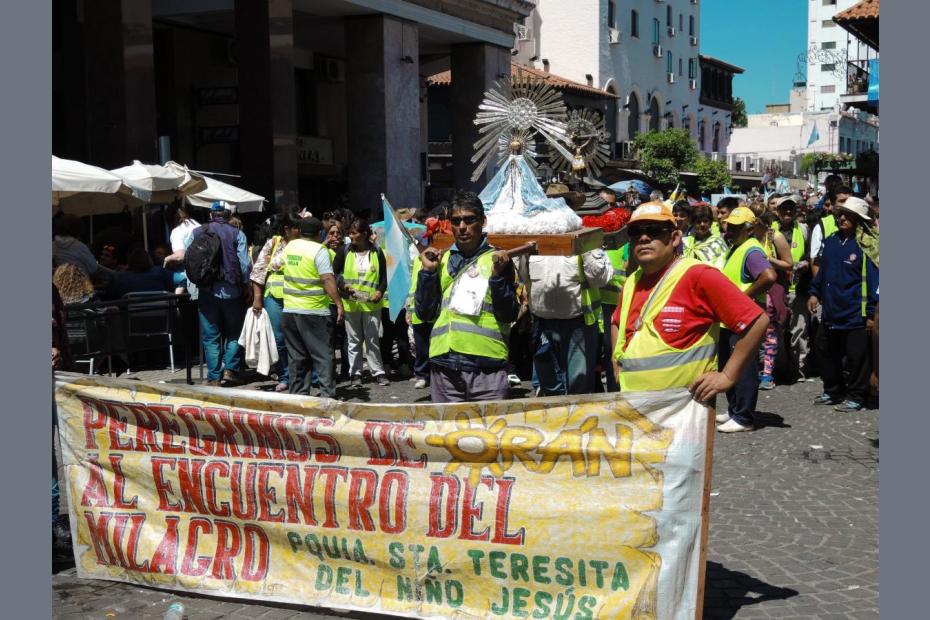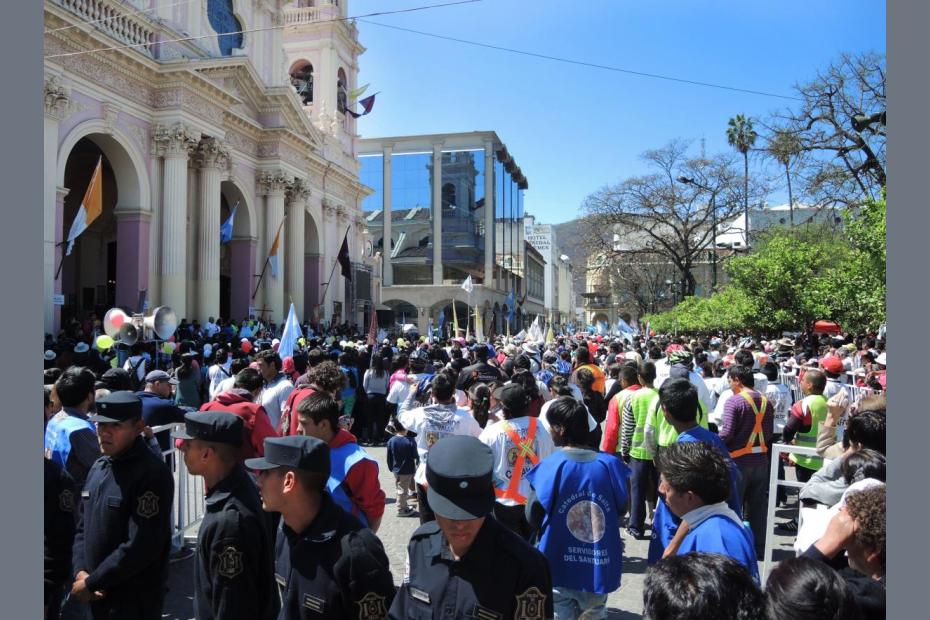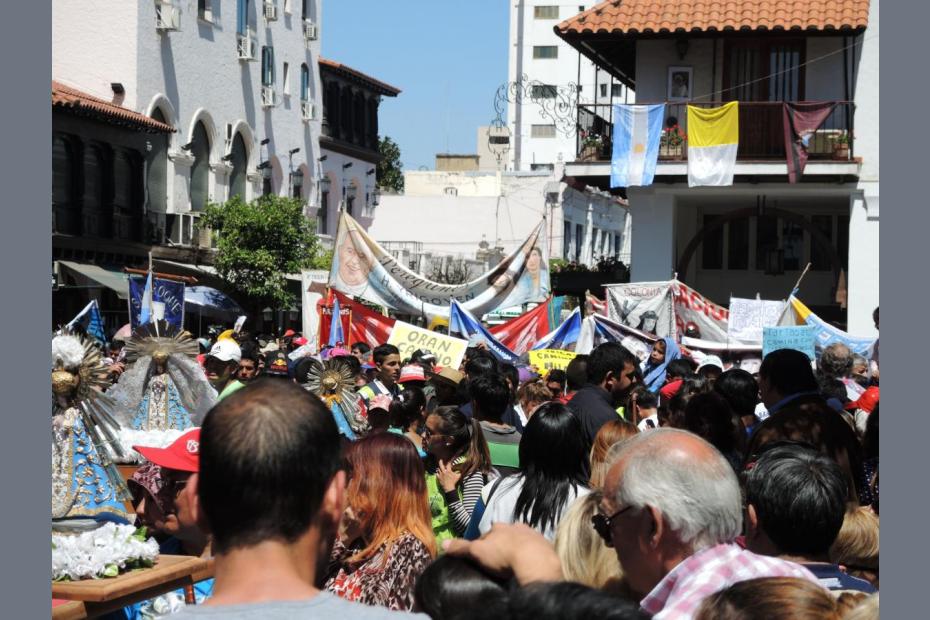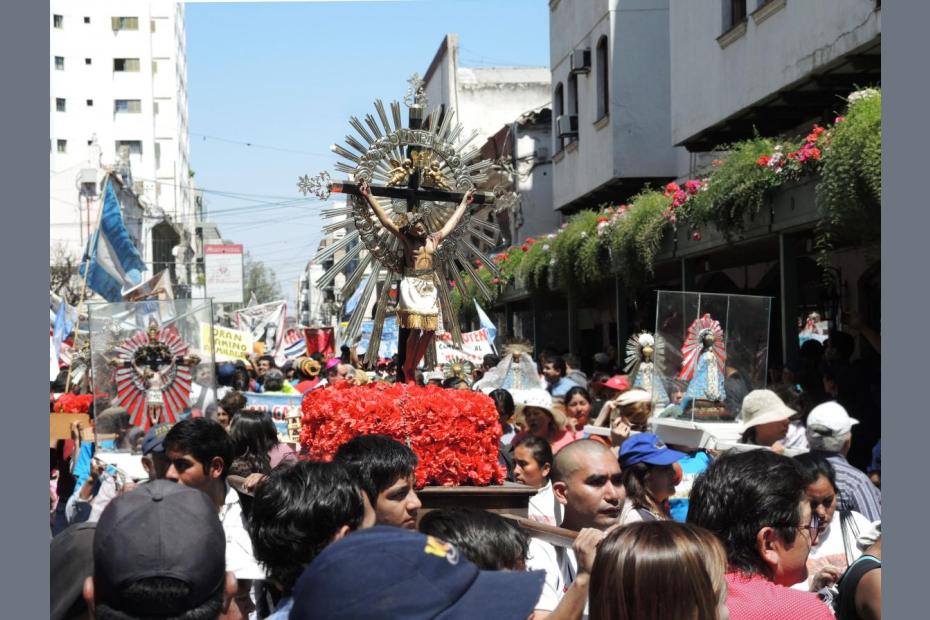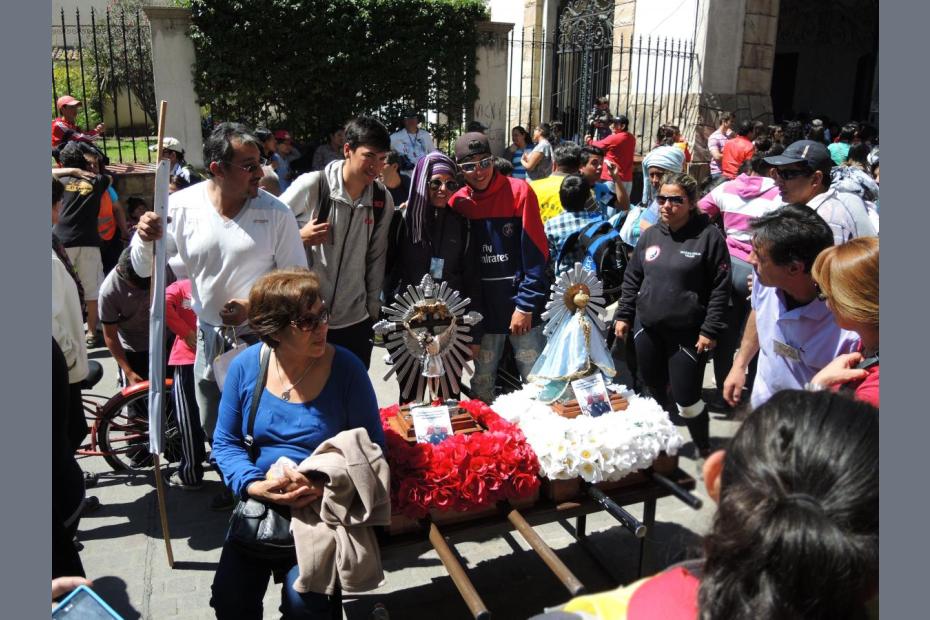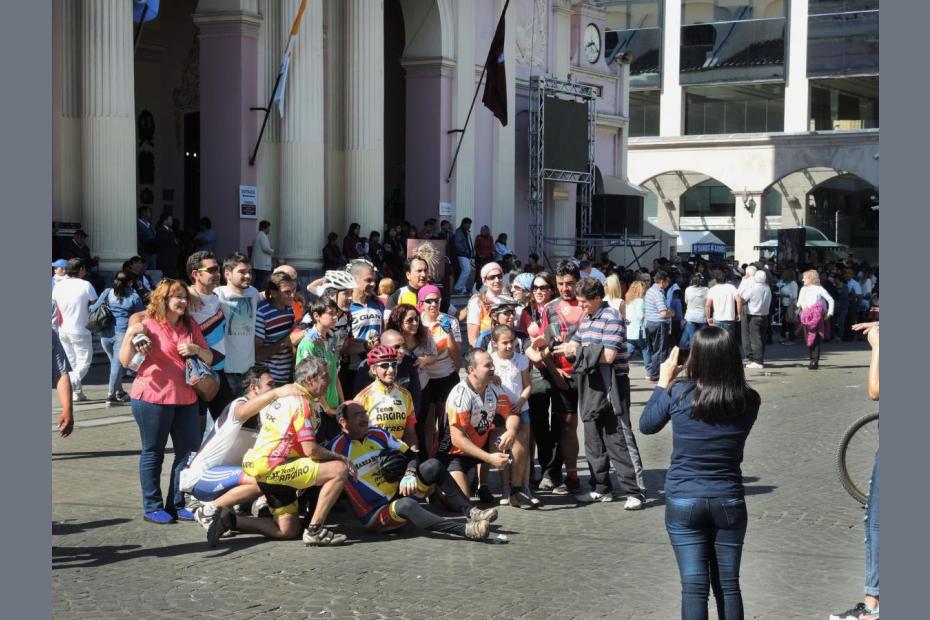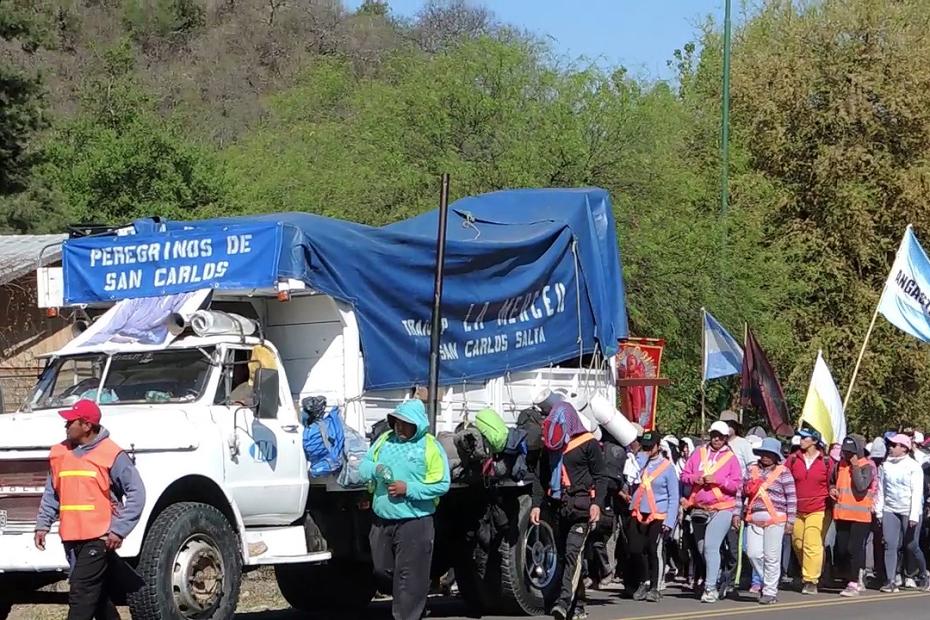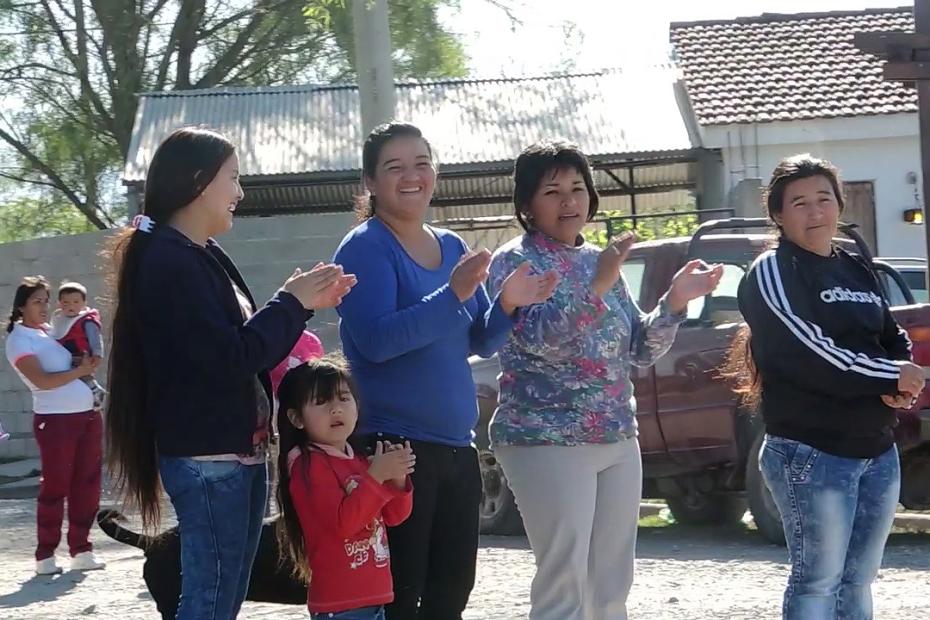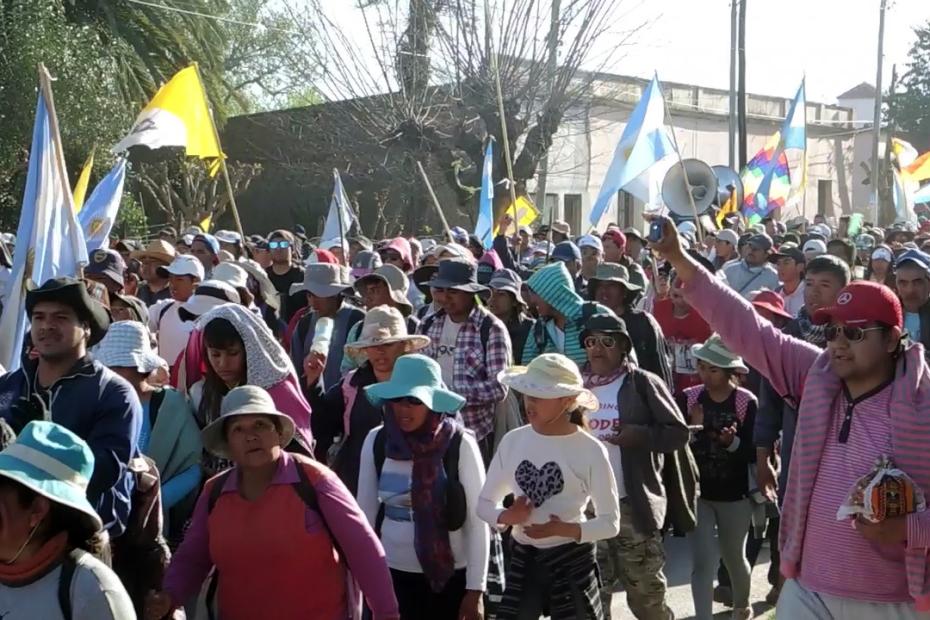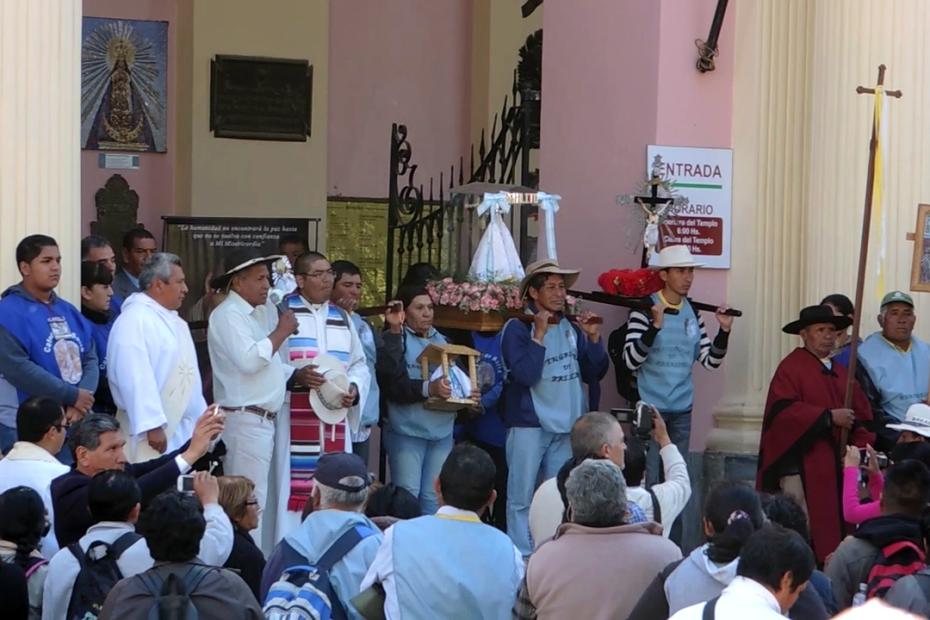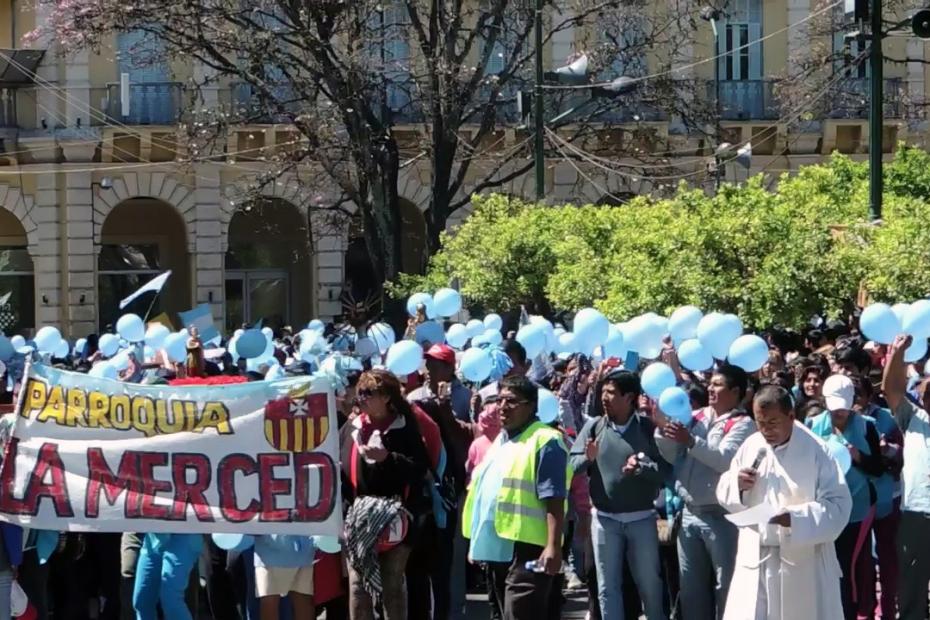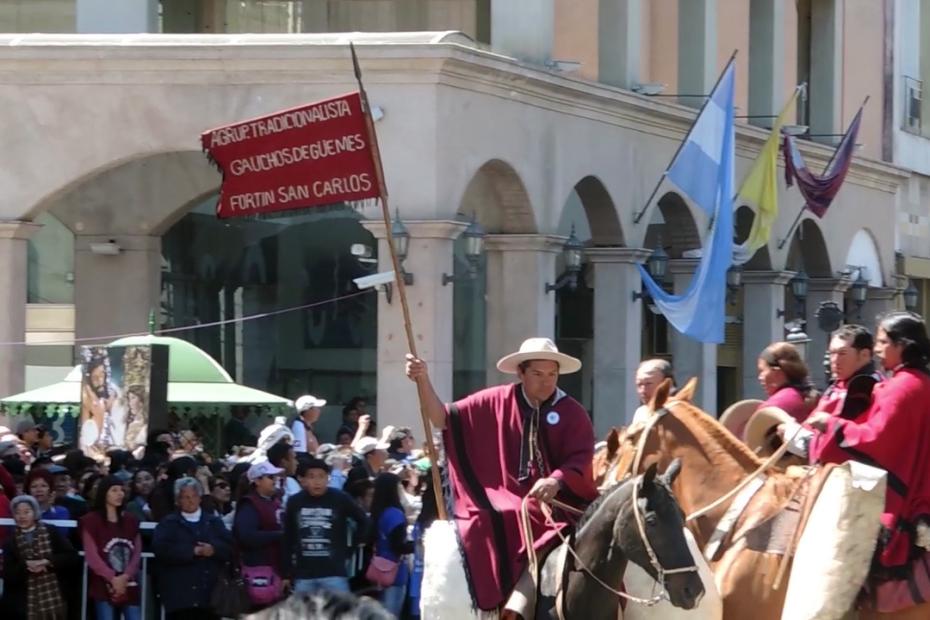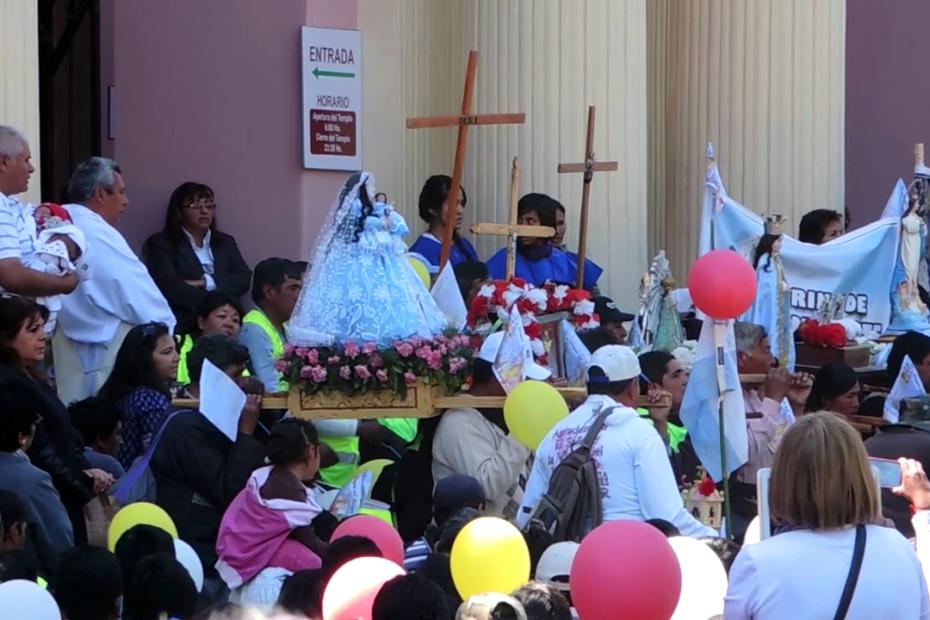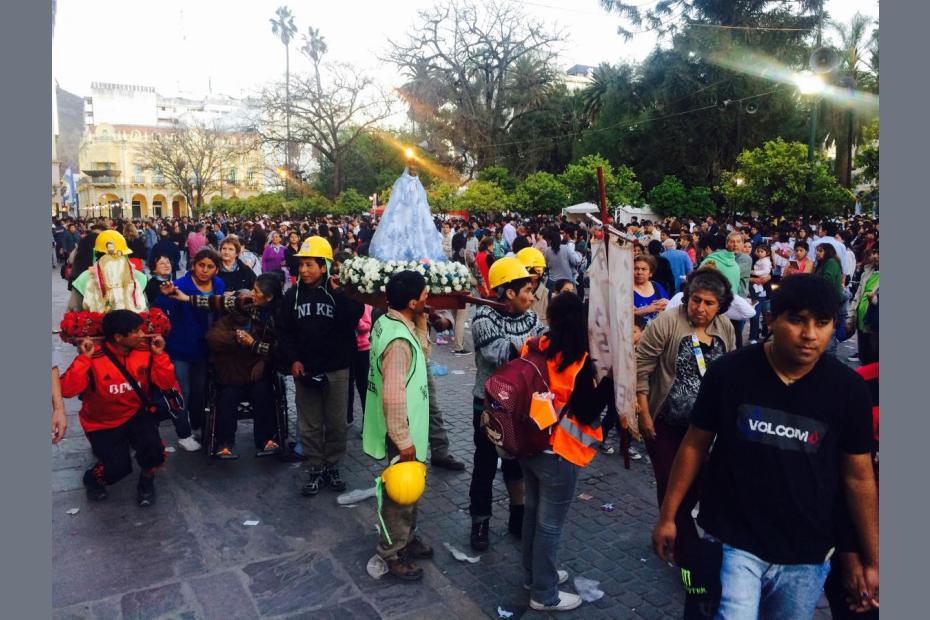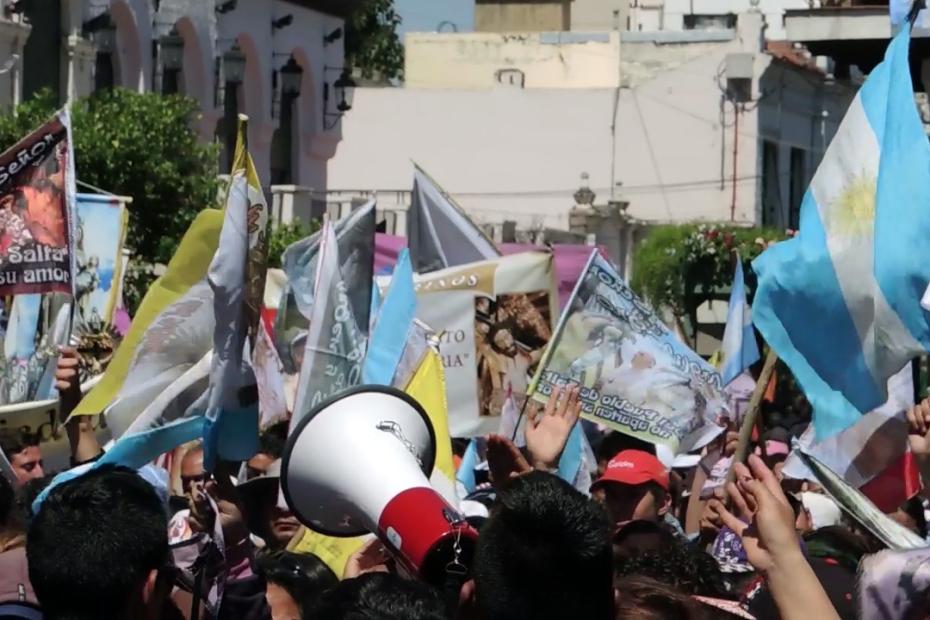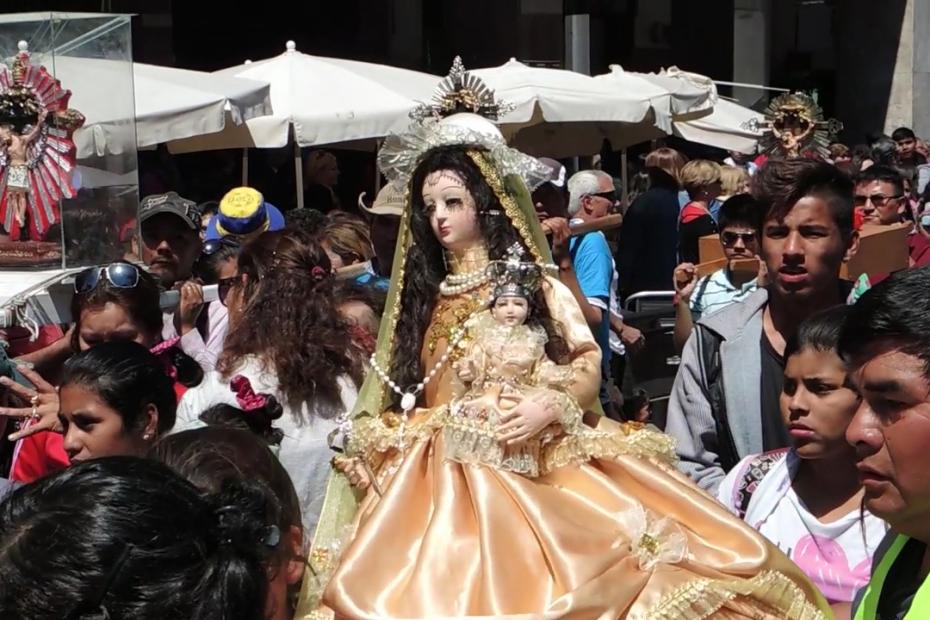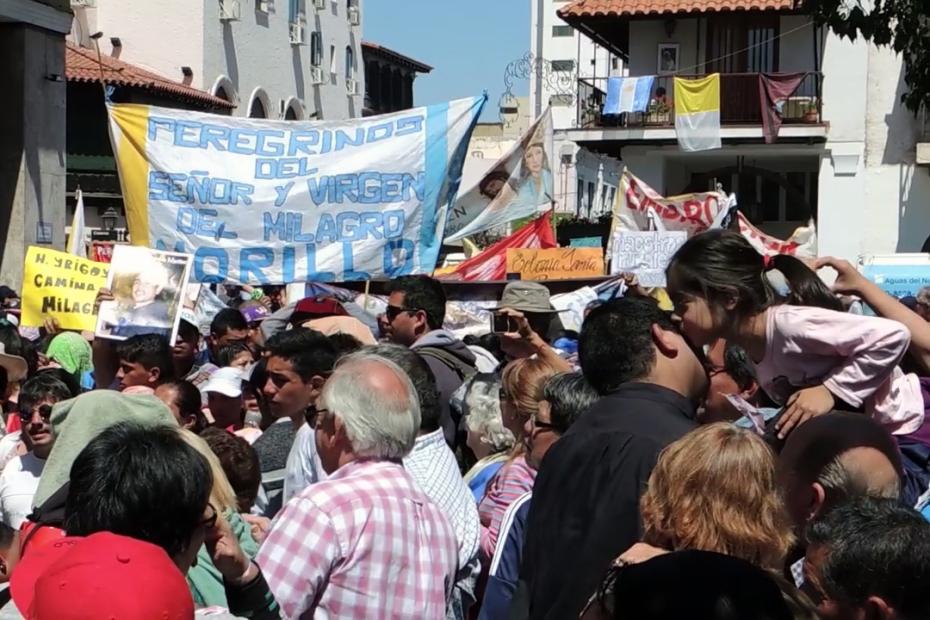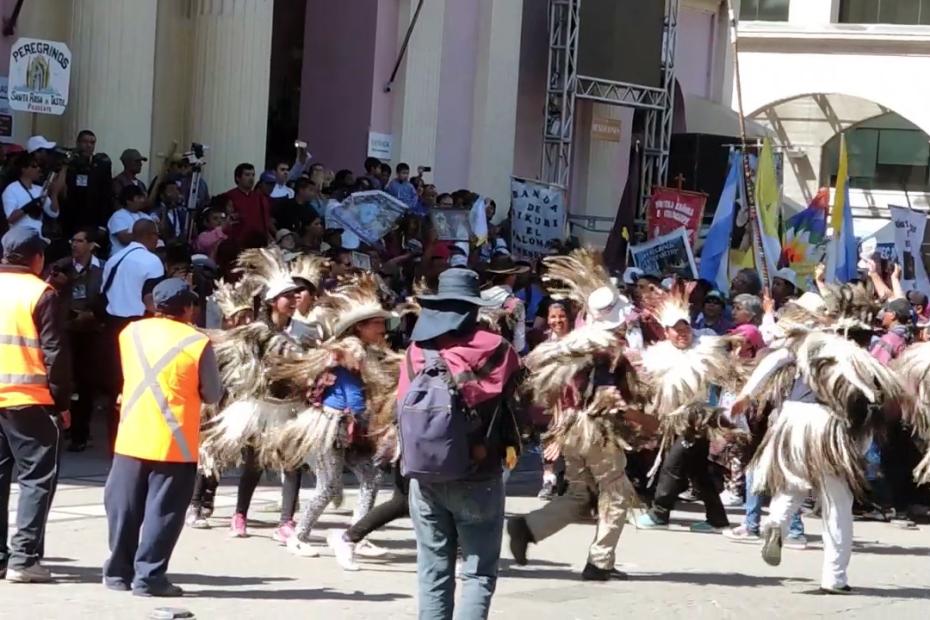Pilgrims play a large and communal role in the feast of Señor y Virgen del Milagro, held in Salta, Argentina September 13-15 each year. As many as 60,000 pilgrims walk, bike, or ride by horseback from farmlands and desert towns all over the province and beyond1 to join a total of 800,000 feast participants for the biggest religious gathering in Argentina.
After traveling for two to six days to Salta, the pilgrims present themselves in groups on the steps of the cathedral.2 Many of the pilgrims, especially those who walk, are indigenous peoples, which is not surprising given that the towns in the province of Salta, especially the smallest villages, are largely indigenous. Unlike some other pilgrimages, this is almost always a communal, or at least a family, affair. Parishes, towns, and even labor groups organize themselves and travel together, coordinating the process with the cathedral staff and police and towns along the way. In 2015, the days leading up to the feast were cold and sometimes rainy, with nighttime lows near freezing in the plains, colder in the mountains. By the day of the feast, the weather turned unusually hot for this time of year.
More than 60,000 pilgrims travel to Salta by foot, horse, and bicycle from all over Argentina to participate in the feast of the Señor y Virgen del Milagro on September 15. This video shows some of the groups along their journey and being received at the cathedral in Salta.
Some pilgrim interviewees described preparations for the pilgrimage that included sending their patron statue from house to house each night for prayers and vigils, but most simply said that they gathered with others from a parish or range of parishes and began the trip.
As many pilgrims described it, their journey is the manifestation of a promise or pact to extend themselves in a truly meaningful way to visit the Señor and/or Virgen. Thought the word pact (pacto) is often used, it never seemed to be used in a calculating, rationalized sense of tit-for-tat exchange, but rather, for returnees, as a heartfelt expression of a relationship. As two women pilgrims interviewed together put it, “God loves us, God protects us,” and they were there to respond to that. Other pilgrims described their sacrifice as a means not only to demonstrate fidelity to and for the Señor y Virgen, but also to realize more deeply and personally themselves what is important and what the Señor y Virgen del Milagro mean to them. Pilgrimage shows the Señor y Virgen del Milagro that, in the words of a constant prayer refrain during the feast, “we need you,” and it also changes the pilgrim for the better in the process. Second, while private devotions are important, the fact that a whole community is making a pact of fidelity, or that each large group represents the whole community, is important. The pilgrimage is not regarded as something individuals do, but rather as a way of bringing a whole community before the Señor y Virgen del Milagro.
To extend oneself on pilgrimage clearly entails hardship, but it does not mean only that. Though the trip often has tranquil moments, both journey and arrival mix tranquility and boisterousness. En route, the pilgrims often sing loudly, as can be seen in the video on this page, and many pilgrims talk about that as a highlight of the journey.
Each group carries at least one image of some patron saint or saints – usually on an anda, a shoulder-borne carrying platform, but sometimes strapped over a person’s shoulders so that it is borne on the chest. Many andas bear images of the Señor y Virgen del Milagro, but one also sees the Virgen del Valle, the Virgen de Urqupiña, other Marian images, and patron saints from hometowns. When two processions meet along the pilgrimage route and join together, the andas are brought first to face one another to symbolize the uniting of the groups. Some sign almost always announces that they are pilgrims and where they come from, reinforcing the communal element of the trip. The sheer number of andas distinguishes the feast from many other feasts that involve carried statues, because here, while there are clearly two very large and elaborate statues at the center of the feast, pilgrims bring their own images of the same holy figures, and, after arriving, sometimes even stand with small andas while facing the church and praying.
Pilgrims are followed or preceded by trucks that carry food and water, sleeping bags, tents, and sometimes the old or the very young who cannot walk the whole way. In villages along the routes, people open their houses and their land to the pilgrims, and along the way one can see trucks or stops on the side of a major pilgrimage route offering free fruit or water to pilgrims as they pass by. At major stopping points, towns open themselves to thousands of visitors for the night. Salta residents, known as Salteños, open their city in all sorts of ways, housing pilgrims, providing water, food and first aid for them. The logistics of the feast are remarkable, and an inquiry in small towns along the route or with police and even ordinary Salteños in the plaza yields quick information about which group is where and when it will arrive.
Among the pilgrims in 2015 was a large group of miners from San Antonio de los Cobres, close to the mountainous border with the Chile. One interviewee from this group had come 24 times on pilgrimage, and another had come for four times. They talked about having made the trip for others who couldn’t travel, about walking as a form of supplication for the health of others, and described the pilgrimage itself as a way of expressing their faith. They also made clear that however many challenges they faced en route, they liked the pilgrimage, and several mentioned that their favorite part was singing along the way. Each was clearly moved by the process of making and especially fulfilling the promise, and first-time walkers talked about being more moved than expected when they reached the cathedral and encountered the Señor y Virgen del Milagro.
Another group, an extended family with no registered status as pilgrims, had traveled from near the Bolivian border, partly by walking and partly by bus. They had no place to stay in the city, and if the police could not help them find a place were prepared to stay in the square (they did find a place to stay). The father explained that they came because before their son Luis was born, doctors said he would not live, but the father prayed the Señor del Milagro. They have brought the son here each of the last seven years in thanks for his life and health. The man’s sister was sick and in a coma, expected to die, but he said that he held his image over her body and prayed hard, and she recovered. These, they said, are their two miracles.
A group of young people who came by bus from the area around Catamarca, members of a group called Youth for the Love of Christ, said that they were here for the first time but were all deeply moved by being together. Normally they serve at Masses, and bike around town to visit the sick, elderly, and dying, but this was a new experience to them. Members of the group said that it was a deeply emotional feeling that they could never explain to see the Señor y Virgen del Milagro. Their own devotion had been to la Virgen del Valle, the patron of Catamarca, and the Virgin del Belén, though now they felt something new and powerful.
The video includes pilgrims from Brealito, whose path crossed salt desert and foggy and sometimes even snowy mountain areas for 260 km, singing “The Lord said the mountains will move, and we will move, woo-ooo.”
Arriving in Salta
Pilgrims generally arrive at the cathedral on September 13 or 14, when they line major streets around the cathedral square waiting their group’s turn to be presented before the Señor y Virgen del Milagro. Each is brought into the cordoned-off area at the steps of the cathedral, where a priest announces them, often with the bravado of a world cup announcer, telling about their journey, and a representative can offer a prayer or greeting. Some sing, others kneel, and pilgrims are often seen crying. Members of a group of 3,500 pilgrims from Quebrada del Toro, in the desert foothills of the Andes, danced in feathered costumes as they entered the cathedral. They often pray for those who are unable to come, especially the elderly. They are blessed with holy water as they enter.
Whereas individual pilgrimages like the Camino de Santiago are often said to be about the journey even more than the destination, at this feast the arrival is extremely important, and pilgrims are often emotional at the fulfillment of their vow. In conversations with the pilgrims, one could occasionally learn about the particular hardships overcome en route, or hear about these from the priest who announced their arrival, but the ways they described the value of the experience made it not sound like a personal accomplishment, like running a marathon, but something that was valuable mostly because it brought them and the people they walked for emotionally close to the Señor y Virgen del Milagro.
The feast
September 15 is the Solemnity of the Lord of the Miracles. In the morning, the archbishop celebrates Mass in front of the cathedral, while crowds continue to visit the statues inside. The major procession begins at 3:30 p.m. Over the course of 30 minutes, a huge, plain wood “primitive cross” and a painting that is said to have miraculously cried in the 18th century begin the procession, followed the images of Virgen and then the Señor y del Milagro that are the primary focus of attention. The procession travels 2.3 km from the cathedral to the Parque 20 de Febrero, which commemorates an important battle for Argentine independence. At the park, the Archbishop preaches, there is singing, and then a renewal of the Pact of Fidelity before the statues begin a long procession back to the cathedral.
- 1Total numbers are from El Tribuno, Salta, Argentina, September 16, 2015, 1 and 3, while the number of pilgrims was given in the same paper on September 14, 2015, 1. Both times the paper cites police figures. Almost all of the participants, so far as the author could tell, were Argentinian.
- 2El Tribuno, September 14, 2015, 2, citing archdiocesan figures. Police and towns along the way so carefully manage the pilgrimage and accommodations that the numbers are easy to verify. The official cronograma of the pilgrimage lists many pilgrim groups, but it was clear at the cathedral that there were more groups who came that were not on that list.
